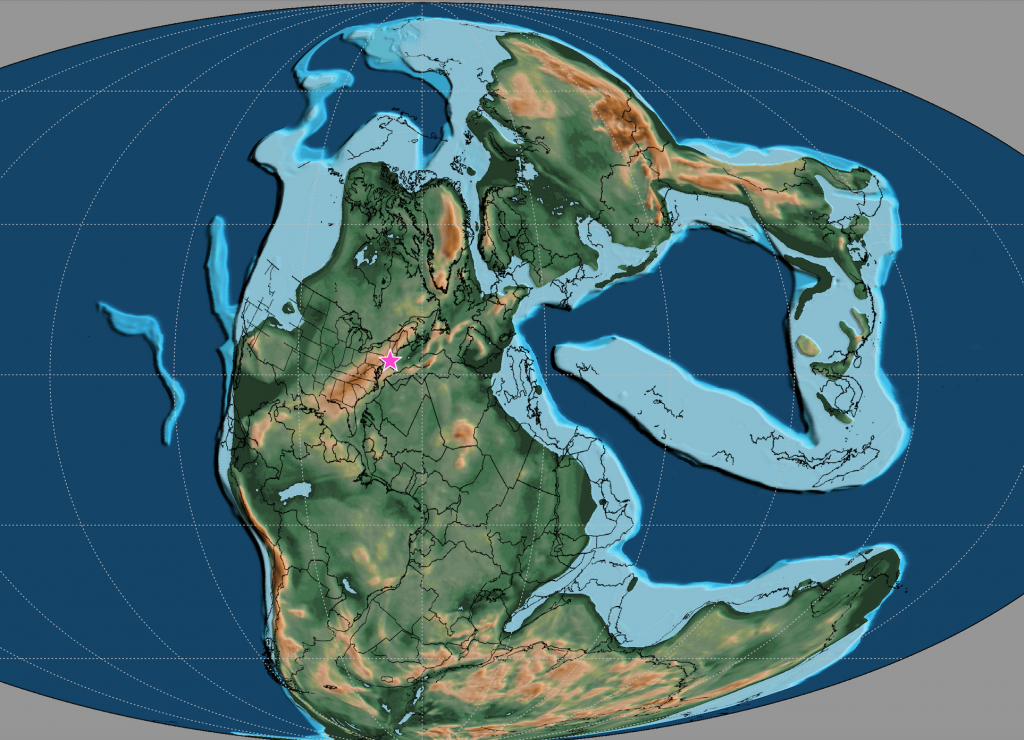It’s easy to go about your day without ever thinking about the bedrock our buildings, streets, and parks rest on. However, geology shapes our city in surprising and important ways. Learning about what’s underneath SoHo provides a deeper understanding of what influences the buildings in the neighborhood and city today.
The views to the north in Midtown or south in Lower Manhattan are dominated by enormous skyscrapers over 700 feet tall. However, SoHo, as well as its surrounding neighborhoods, are more modest in height. Part of the reason for this lies with the tireless work of preservationists, through whose efforts the beautiful smaller and mid-sized buildings from the 1800’s in SoHo have been preserved for future generations of New Yorkers. However, million-year-old rocks and the activity of glaciers thousands of years ago provide further insight into this phenomenon.

The rock beneath SoHo originated at the bottom of oceans that existed over 500 million years ago. Tiny particles of mud and clay accumulated on the quiet sea floor, and eventually pressure fused them into shale and limestone. Thanks to plate tectonics, which causes continents to move across the Earth’s surface, these quiet underwater conditions would not last forever. Starting 450 years ago, the Appalachian mountain-making events pushed land masses together multiple times, forming huge mountain ranges that would rival today’s Himalayas and creating the supercontinent of Pangaea. The shale and limestone crumpled and compressed under the extreme pressure of the new mountains, eventually melting and reforming as metamorphic rocks like gneiss, schist, and marble.

Metamorphic rocks are incredibly strong and sturdy, and are solid foundations for enormous skyscrapers. Over the course of millions of years, the mountains eroded and revealed the bedrock that underlies Manhattan today. The bedrock for most of Manhattan south of Central Park, including SoHo, is called the Hartland Schist. This rock, created deep under ancient oceans, then melted and reformed under mountains, now serves as the strong base which supports our building foundations and subway tunnels.
To understand the second part of the story of SoHo’s foundations, we need to travel in time to the Wisconsin Ice Age, which started 140,000 years ago. During this period, enormous glaciers and ice sheets advanced south during colder global temperatures and retreated north as it warmed, leaving marks on the landscape. As glaciers move across land, they scrape up and carry everything from sand particles to boulders bigger than cars. They are powerful eroders, and can carve out valleys as they move. Their huge weight can distort the landscape and create depressions. When temperatures warm and glaciers start to melt, they dump everything they have been accumulating, leaving behind piles of debris.

The last time Manhattan was completely covered by glaciers was roughly 20,000 years ago during the Woodfordian Stage. When the last glacier retreated, it left behind enormous amounts of sand in the depression between lower Manhattan and Midtown. The glacier dropped up to 200 feet of sediment, covering the bedrock under areas that are now SoHo and Greenwich Village. This material is not as sturdy as bedrock, and anyone hoping to build a skyscraper on it would have to dig through the sandy sediment until bedrock was reached. This process is time consuming and adds expense, making it less appealing for builders.
The ancient mountains and glaciers have shaped New York as we know it. Without the forces that made strong metamorphic rocks, there would not be support for the skyscrapers and subway tunnels. And without the sediments deposited by retreating glaciers, more skyscrapers might have developed between Midtown and Lower Manhattan. Although New York’s glaciers have melted and ancient mountains have eroded, their underfoot impact continues to this day.
Next time you’re walking down Broadway and look up at the beautiful low-to-mid-rise, cast-iron architecture, think about what lies at the base of it all!